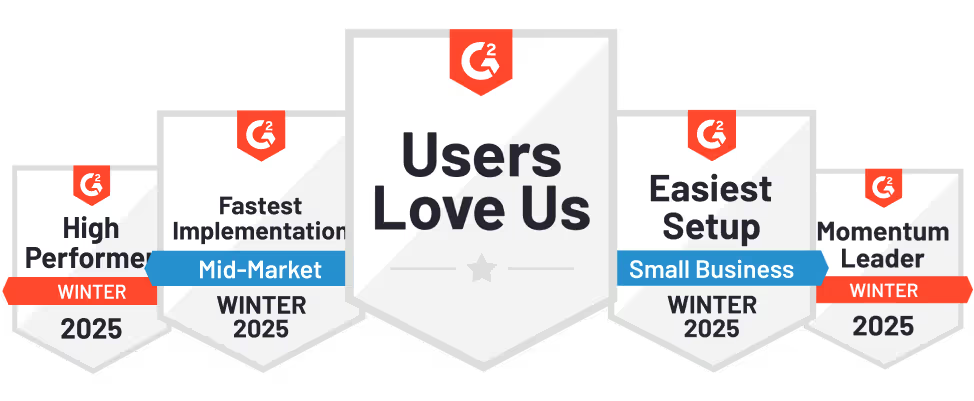If you've been researching LinkedIn advertising strategies, you've probably encountered plenty of advice about managing small budgets and basic lead generation. You know the typical recommendations: ‘Start with $100-200 per day,’ ‘Focus on high-intent audiences,’ and ‘Build your funnel step by step.’While this advice works well for smaller companies just getting started with LinkedIn, it completely breaks down when you're managing enterprise-level campaigns with million-dollar budgets.
Enterprise LinkedIn advertising in 2025 requires a fundamentally different approach. Instead of focusing solely on lead generation, successful enterprise campaigns serve three distinct purposes, each requiring its own strategy and measurement framework.
TL;DR
- Enterprise LinkedIn ads go beyond lead generation, focusing on brand awareness (30%), pipeline acceleration (40%), and future pipeline development (30%).
- Targeting starts with warm audiences, progressing from awareness content to solution-focused messaging before pushing direct sales engagement.
- Sales and marketing integration is key—campaigns should align with sales conversations to reinforce messaging and drive deal momentum.
- Metrics must match objectives—track reach for awareness, influenced pipeline for acceleration, and long-term attribution for future pipeline growth.
The Three Pillars of Enterprise LinkedIn Strategy
1. The first pillar is educational outreach.
For enterprise companies, getting your brand in front of C-suite executives matters more than immediate lead generation. Think of it this way: if a CXO watches your thought leadership video, that's a win – regardless of whether they immediately fill out a form. This educational component typically consumes about 30% of the total advertising budget, and its success is measured by reach and engagement rather than direct response metrics.
2. The second pillar, consuming roughly 40% of the budget, focuses on supporting the current year's pipeline.
This is where things get interesting. Instead of just running lead generation campaigns, enterprise companies use LinkedIn to accelerate active sales opportunities and expand relationships with existing customers. When your sales team books a meeting with a prospect, targeted LinkedIn campaigns provide ‘air cover,’ reinforcing your message and positioning during competitive deals. Similarly, specific campaigns target existing customers for cross-sell and upsell opportunities, often the quickest path to new revenue.
3. The final pillar looks toward the future, using the remaining 30% of the budget to develop next year's pipeline.
With enterprise sales cycles typically stretching 150-200 days, you need to plant seeds now for harvesting in the future. This means investing in new customer acquisition campaigns with the understanding that results might not materialize for six months or more.
Building and Engaging Your Audience
Success with enterprise LinkedIn advertising requires a sophisticated approach to audience development. Rather than immediately targeting cold audiences, start with your warmest prospects and expand outward. Begin by retargeting your website visitors, using LinkedIn's Insight tag, while applying your ideal customer profile (ICP) filters for company size and job titles.
If you have a substantial following on your company page, that's your next layer of warm audience. But don't worry if you don't – you can build your own warm audience pools through targeted top-of-funnel campaigns. The key is progressive engagement: start with broad awareness content, then retarget those who engage with more specific solutions-focused messages, and finally present strong calls-to-action like demo requests to your most engaged audiences.
Aligning Content with the Buyer's Journey
Content sequencing becomes crucial at the enterprise level. Your first touch should focus on problem awareness through educational content and industry insights. As prospects engage, move them toward solution education, showcasing your capabilities and ROI through case studies and detailed product information. Only after establishing this foundation should you push for direct sales engagement through demo requests or consultation offers.
This progression aligns naturally with how enterprise buyers make decisions. They need to understand the problem space and potential solutions before they're ready to engage with sales. By respecting this customer journey, you build credibility and trust while moving prospects toward a purchase decision.
Integration with Sales
The most successful enterprise LinkedIn campaigns work in lockstep with sales activities. When your sales team books a meeting with a prospect, that should trigger targeted LinkedIn campaigns supporting the conversation. This coordination ensures your prospects see consistent messaging across all channels and helps maintain momentum throughout long sales cycles.
For account-based marketing initiatives, this integration becomes even more critical. Your LinkedIn campaigns should align with sales conversation stages, targeting multiple stakeholders within key accounts. This creates a surround-sound effect that amplifies your sales team's efforts.
Measuring What Matters
Each objective requires its own measurement approach. For educational campaigns targeting C-suite executives, focus on reach and engagement metrics like video completion rates. Current year pipeline initiatives should track influenced pipeline value and changes in deal velocity. Future pipeline development needs longer-term attribution models that can connect early-stage engagement to eventual opportunities.
The key is matching your metrics to your objectives. Don't judge your C-suite thought leadership campaign by lead form fills, and don't evaluate your pipeline acceleration campaigns solely on impressions. Each type of campaign serves a specific purpose in your overall strategy.
Looking Ahead in Enterprise LinkedIn Advertising
Enterprise LinkedIn advertising in 2025 is about more than just generating leads – it's about supporting complex sales cycles, nurturing long-term relationships, and building brand credibility with senior decision-makers. By moving beyond the basic playbook and adopting a more sophisticated approach, enterprises can create sustainable, scalable LinkedIn programs that drive both immediate revenue and long-term growth.
Remember: success comes from understanding your different objectives, aligning your content and targeting with each goal, and measuring what truly matters for each type of campaign. Whether you're supporting this quarter's pipeline or building awareness with C-suite executives, LinkedIn offers the tools and targeting capabilities to achieve your goals – if you know how to use them.






